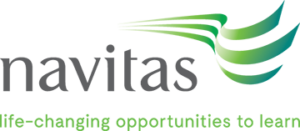SAE Vienna: Authentic learning spaces equipping students for the industry

In September this year, a new European SAE campus in Vienna was officially opened. SAE Vienna was established 31 years ago however its recent relocation to the city centre marks its third relocation. Like all the newer SAE campuses and renovations, the design is influenced by two key principles: a ‘sticky’ campus that students want to be part of and to work within, and an authentic space which resembles the creative media industry.
Learner autonomy and the ‘sticky’ campus
Key principles of learning space design have been attributed to creating effective learning environments. By designing learning spaces that support autonomy and resemble an authentic workspace, students are enabled to effectively engage in self-directed learning (also known as independent learning). Practising self-directed learning means students will be able to take responsibility for their own learning and to make decisions about what they want to focus on.
As outlined by Boud (1981) self-directed learning also encourages students to:
- plan their learning experiences
- find resources required for learning
- create problems to challenge themselves
- be autonomous in where and when they learn
- continue learning outside of the educational institution.
Learning spaces are considered effective when they are designed for: home-like comfort, way-finding, balance, valued behavior, openness, security and welcomeness (Parisio 2013). These design elements help make a campus ‘sticky’; a space where students will want to learn, live and thrive as they are able to customize their own learning.
A look at SAE’s Vienna campus
The SAE Institute in Vienna intends to prepare students for their entry into the fast-paced and demanding media industry as well as to accompany and accelerate their careers.
Key facilities of the new campus include:
- The whole building is dedicated to the culture of Vienna (studios quoting Viennese musicians, classrooms quoting Viennese districts, project rooms quoting Viennese highlights such as Schönbrunn Palace).
- A giant student lounge in typical Vienna coffeehouse style featuring a ‘boiler room’ radio studio, a ready-to-go DJ setup and a mighty sound system.
- A 130 square meter living room style library for silent work, especially designed for coders and web programmers.
- 400 square meters of co-working space for alumni and all creative media industry heads.
- Seven new studios inspired by iconic Austrian artists. See below for photos of the studios by photographer ©Stefan Gergely.
Here are some more photos of the campus by Campus Manager Christian Ruff:
As SAE’s new flagship campus, the Viennese institute is nothing less than the whole SAE concept reinvented: a creative media hub in the city centre, attracting musicians, influencers, students, lecturers, alumni and media heads all together.
Learn more about SAE Vienna here, or share your thoughts and ideas via Yammer, Twitter or LinkedIn.
References
- Boud, D. (1981). Developing student autonomy in learning. New York: Nichols Publishing Company.
- Parisio, M. (2013). Designing learning spaces in higher education for autonomy: Preliminary findings and applications. In H. Carter, M. Gosper and J. Hedberg (Eds.), Electric Dreams. Proceedings ASCILITE 2013 Sydney. (pp.676-680)
